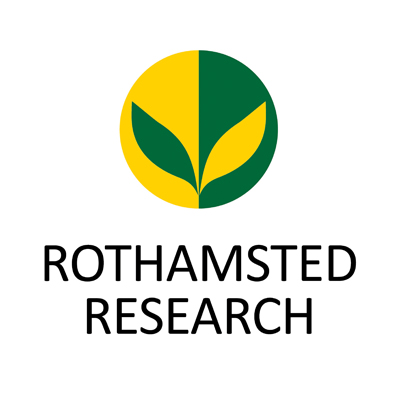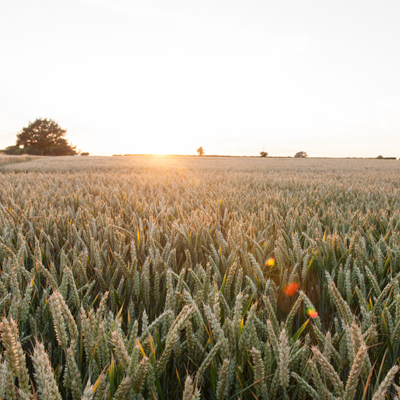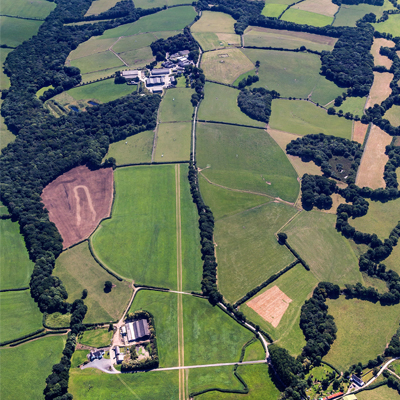Rothamsted and Cranfield are only 25 miles apart. We have a long history of collaboration, going back to the 1980s and before, when the Soil Survey of England and Wales moved from Rothamsted to Cranfield. Between us we have some of the best expertise and facilities for soil and plant research globally, as well as excellence in complementary areas of science and engineering.
In 2017, Rothamsted and Cranfield signed a Strategic Partnership Agreement to develop a mutually beneficial portfolio of activities. The agreement includes provision for a Joint Management Team to foster the partnership.
Management team contacts
Cranfield University |
Rothamsted Research |
| Guy Kirk E: g.kirk@cranfield.ac.uk |
Steve McGrath E: steve.mcgrath@rothamsted.ac.uk |
| Ron Corstanje E: roncorstanje@cranfield.ac.uk |
Stephan Haefele E: stephan.haefele@rothamsted.ac.uk |
| Andrew Thompson E: a.j.thompson@cranfield.ac.uk |
Tim Mauchline E: tim.mauchline@rothamsted.ac.uk |
| Leon Terry E: l.a.terry@cranfield.ac.uk |
Angela Karp E: angela.karp@rothamsted.ac.uk |
PhD student projects
Find out more about the student projects from our Cranfield-Rothamsted Soil AgRIA PhD students below.
2018 Tessa Reid
Has plant breeding decoupled beneficial microbiome interactions in wheat?
The development and application of synthetic fertilisers fuelled the green revolution and expanded our ability to produce food. However, current agricultural practices rely on unsustainable levels of agrochemicals which are environmentally harmful. In addition, estimations of the global population reaching 9 billion by 2050 mean that a sustainable increase in food production is required.
Sustainable agriculture requires the more efficient use of available resources, and the naturally occurring soil dwelling microbiome offers potential to contribute to the sustainable intensification of agriculture. Root associated microorganisms can benefit crop plants in several ways including improved plant nutritional status and protection against biotic and abiotic stresses.
However, the success of plant beneficial microbial inoculants to plant and soil systems are often unpredictable. This project aims to better understand plant-microbial interactions, including both fungi and bacteria, in wheat with the view of developing robust microbial inocula for enhanced crop growth.
2018 Emma Bailey
Beneficial Predators for Integrated Pest Management

Pests can cause huge amounts of irreparable damage to agricultural crops, and an all-out attack using pesticides is often not an effective solution – as well as resulting in environmental damage, many pest populations have developed resistance to pesticides. Crucially, broad-spectrum pesticides often result in the elimination of beneficial predators which contribute towards the control of pest populations.
Integrated Pest Management (IPM) strategies incorporate beneficial predators alongside other methods to control pest populations. An important aspect of IPM is a restriction on the use of pesticides, including only using pesticides targeted at the pests, which will not harm beneficial predators.
The first aim of this project is to use bioinformatics approaches to sequence, assemble and annotate the genomes of three beneficial predator species: Orius laevigatus, Amblyseius swirskii and Anthocoris nemoralis. The next step will be to perform a comparative genomics analysis of these predators alongside their prey (white fly, thrips and aphids). This should reveal information about these predator-prey relationships and their co-evolution, as well as which pesticides would target the pests but not harm the beneficial predators. This knowledge will be helpful when developing IPM strategies in the future and will hopefully contribute to solving the food shortage crisis in our growing world.
2017 Emily Masters-Clark
Catching a lift on the fast root – do mycorrhizas select beneficial rhizosphere bacteria from the soil microbiome?

Intensive agriculture that uses large amounts of agrochemicals is unsustainable and environmentally damaging: other options must be implemented to meet the global food security challenge. Soil microbes benefit crop plants in a number of ways, including improving nutritional status and suppressing disease, but the microbial partners and mechanisms are poorly understood and underexploited. Many different bacterial groups are associated with plant health, but the major beneficial plant-fungal interaction is with arbuscular mycorrhizal fungi (AMF), which extend root systems and supply nutrients, especially phosphorus. An important, but poorly understood aspect of AMF is their interaction with other microbes in the mycorrhizosphere. We propose that AMF are an important conduit, bridging soil pores and facilitating access of plant-beneficial bacteria to to roots, either on hyphal surfaces or within hyphae themselves. This project aims to better understand the tri-trophic interactions between host-plants, AMF, the wider soil microbiome, soil fertility and physical structure. The ultimate aim is to develop site-appropriate management strategies potentially including mixed microbial inocula, with a long-term goal of contributing to sustainable intensification of agriculture.
2017 Jonah Prout
A Novel Soil Organic Carbon Measurement and Indexing System

Monitoring key properties of soil organic matter such as soil organic carbon gives an indication of a soil’s ability to carry out ecosystem functions and helps inform soil improvement strategies.
Mid-infrared diffuse reflectance spectroscopy (MIR) is a technology that provides a low cost, dry measurement of soil properties. A calibration for SOC and related properties with MIR will be developed using The National Soil Inventory of England and Wales (NSI) held at Rothamsted Research and Cranfield with support from ICRAF.
Modelling approaches incorporate external factors such as climate and organic carbon inputs which also affect SOC cycling. The prediction of measured and potential SOC for the NSI samples with RothC and a physical protection model will be assessed to compare the underlying concepts of recalcitrance and protection.
Integrating MIR-determined inputs into models would give specific information for a soil from single, quick measurements. In combination, these tools could then be used to develop certification and reward schemes for good soil organic management practices in the UK.
2017 Nikolaos Vavlas
Providing satellite-based soil and crop productivity indicator maps for on-farm management
Soil maps at the farm and catchment scale bear important information for potential crop water and nutrient supply but publicly available soil maps are outdated and have insufficient information needed for precision farming. New technologies provide data from machine-mounted, aerial and satellite remote sensors (RS) to fill this gap. RS data could be converted into information enabling land use planners, environmental monitors and farmers alike to take site-specific decisions.
This project will focus on indicators derived from the temporal and spatial variation of Synthetic Aperture Radar (SAR) data on agricultural fields to explain and improve crop productivity. It could also improve yield prediction and identify causes for yield gaps. Process-based models of crop development and growth will be used to enhance understanding of the ground truth of production systems in the context of earth observation. The spatial elements of the analysis could be used to update soil and land use maps. Both objectives should allow the development of support tools for the farmer, advisory services and food companies or governmental bodies.
2017 Timo Breure
A loss function approach to optimal sensor configuration for soil sensing

Farming practices have always been about actively managing the variability in their environment. Modern agriculture seeks to maximise agricultural productivity whilst minimising the impact on the environment through more precise application of fertiliser and pesticides. Advances in sensor technology and agricultural equipment should allow farmers to improve precision with chemicals and also allow for more variation in crop type or crop density in a field, resulting in a more environmental, ecological agriculture. Predictions of soil properties by sensors are, however, imprecise. The aim of this project is to minimise the losses in profit and impacts to the environment that result from decisions on crop management made using erroneous information about soil properties. In order to fulfil that aim, this project seeks to understand:
a) the uncertainty in the prediction of soil properties of different sensors
b) how these measurements can be used in characterising variation of soil properties
c) to develop a framework that will help to determine optimal combinations of soil sensors, how to deploy them in time and space in order to inform agricultural management for G’s growers in the Cambridgeshire fens.
2017 Xavier Albano
Development of in-field diagnostic tools to measure available nitrogen accurately to mitigate losses to the environment
Worldwide, the condition of intensively-cultivated arable land is poor. The usage of organic amendments such as compost, farm yard manure and other agricultural residues has the potential to provide the soil organic matter required to restore soil health. In addition to improved soil health, the nutrients in organic amendments can supplement/replace mineral fertilizers to meet crop demands.
However, several factors – soil moisture, temperature, pH and C:N ratio affect the way organic amendments influence nutrient availability in the soil. One way of tackling this issue is by developing in-field diagnostic tools that are able to quantify these factors in an accurate and precise way.
The aim of the proposed research is to develop– a paper-strip based colorimetric test and an integrated network of soil sensors, as in-field diagnostic tools for improved N management (nitrate/ammonium release), allowing farmers to avoid. All the information collected will help farmers to adjust N fertilizer rates to soil N supply and reduce N losses to the environment.









